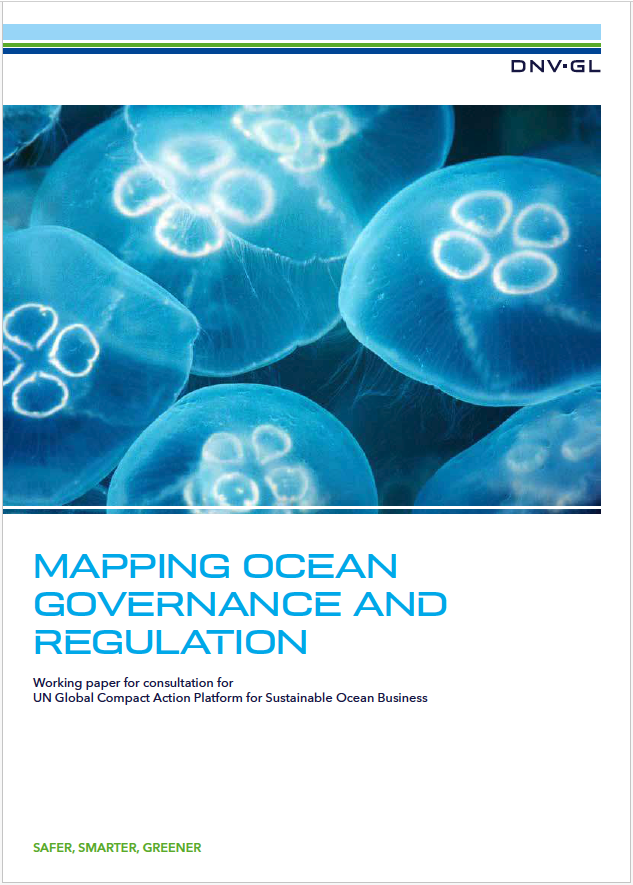Library | ESG issues
Reporting & Disclosures
Reporting and disclosures provide transparency on a company’s financial performance, strategy, and sustainability practices. Clear, reliable disclosures improve stakeholder trust, inform investment decisions, and drive corporate accountability.
Refine
549 results
REFINE
SHOW: 16


Mapping ocean governance and regulation
This report provides an overview of ocean governance and regulations through the lenses of ocean-based industries, addressing international governance, key industries, emerging issues and regulatory developments, cross-cutting challenges and the role of the private sector through the UN Global Compact Action Platform for Sustainable Ocean Business.
The TNFD nature-related risk and opportunity management and disclosure framework: Beta v0.1 release
The Taskforce on Nature-related Financial Disclosures (TNFD) has released a beta version of its Nature-related Risk and Opportunity Management and Disclosure Framework. The framework aims to deliver a risk management and disclosure framework for organisations to report and act on evolving nature-related risks and opportunities.
The third, systems stage of corporate governance: Why institutional investors need to move beyond modern portfolio theory
The authors of this paper argue that institutional investors need to move beyond Modern Portfolio Theory (MPT), and consider a wider risk management strategy. The paper outlines the potential failings of MPT and suggests ways for institutional investors to better align with the needs of society and the economy.
Business of peace: The private sector as a partner in conflict prevention and resolution
This report explores how multinational corporations can support conflict prevention and resolution. It emphasizes the cost of conflict to corporate operations and reputation, identifies opportunities for corporate leadership, and provides case studies of how some corporations work with local governments, NGOs, and social entrepreneurs.
Who owns a company?
This speech examines the evolution of corporate governance, focusing on the shift towards shareholder primacy. It discusses the incentive problems this model creates, such as short-termism and excessive risk-taking, and their economic consequences. The speech concludes by exploring potential policy responses to mitigate these issues.
Climate change analysis in the investment process
This report emphasises the need for investors to consider the physical and transitional risks of climate change in their portfolios. It highlights the importance of integrating carbon pricing and scenario analysis into investment processes. The report advocates for greater education and improved disclosure from issuers to facilitate better climate-related analysis.
The dangers of buybacks: Mitigating common pitfalls
This report explores the rising trend of share buybacks, analysing their benefits and pitfalls. It offers practical tools, guidelines, and measures to mitigate the risks, improve transparency, and ensure buybacks match long-term company strategies.
A sewing kit for living wages: Pathways to living wages in global garment supply chains
The report provides a roadmap for textile brands to commit and implement living wages in their supply chains, as well as explain the importance of providing decent wages to workers.
Insuring a low carbon future: A practical guide for insurers on managing climate-related risks and opportunities
This report explores how climate awareness is being integrated into underwriting, investment, and group-wide risk management practices in the insurance industry. It identifies common barriers and presents a practical framework of eight building blocks relevant for insurers introducing and developing climate strategies. Based on interviews with 14 proactive insurers.
Rules of the game: An introduction to the standards-related work of the International Labour Organization
This report introduces the standards-related work of the International Labour Organization, aimed at improving labour conditions and protecting workers' rights worldwide. It describes the processes for adopting labour standards and includes an outline of the topics covered by these standards, along with a discussion of their benefits.
Shopping for a bargain: How the purchasing practices of clothing brands in Australia impact the women who make our clothes
This report examines the purchasing practices of clothing brands operating in Australia and highlights the impact on women workers in the countries where clothing is made. It calls on brands to publish a plan and commitment to ensuring a living wage for workers throughout their supply chains.
Toward ESG alpha: Analyzing ESG exposures through a factor lens
This paper investigates the relationship between environmental, social and governance (ESG) exposures and factor returns for 1,312 US equity mutual funds. The study suggests that factor tilts, rather than pure ESG considerations, drive factor returns. ESG components unrelated to factors carry insignificant excess return premiums that are economically small.
Authentic sustainability assessment: A user manual for the sustainable development performance indicators
This report provides guidelines for organisations to measure their sustainability performance and report effectively. The document presents indicators for three areas: economy, society, and environment; these are divided into tiers. It also developed a two-tier framework that uses 61 indicators to assess sustainability performance and progress at an organisational level.
Aligning to a net zero pathway: Top tips for pension scheme trustees
This report provides practical insights for pension scheme trustees in aligning their investments with a net zero pathway. The guide's tips are broadly applicable to pension funds across the globe. It defines "net zero," the challenges and opportunities facing trustees, and the importance of stakeholder engagement in crafting a successful transition.
Education - learning for Life: Why enterprise L&D is the next frontier In global education
This report examines the growing importance of Learning & Development (L&D) programmes for businesses. It highlights the increasing recognition of L&D as a strategic investment, particularly for upskilling and reskilling employees to address the skills gap. The report also explores the challenges in L&D implementation, such as low employee engagement and vendor satisfaction, and offers insights into the future of corporate L&D, including trends in digitalisation and budget growth.
A toolbox of sustainable crisis response measures for central banks and supervisors – second edition: Lessons from practice
This report is a toolbox of options for central banks and supervisors to align crisis response measures with climate and sustainability objectives. The second edition includes an extended analysis of sustainability-linked measures. It also highlights the importance of moving from voluntary to mandatory environmental reporting and recommends efficient disclosure to regulated financial institutions.















